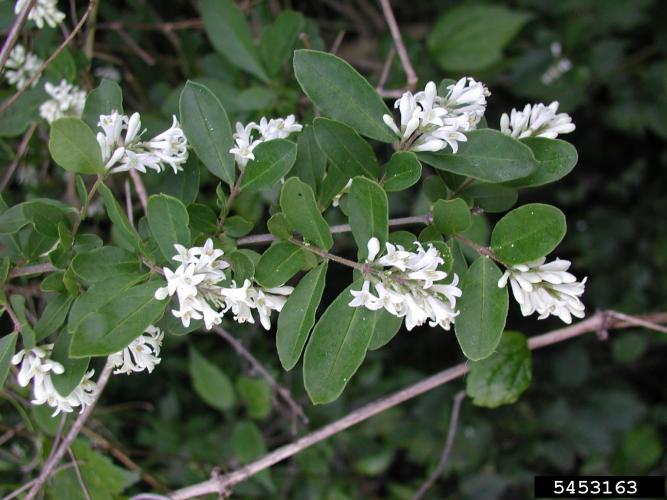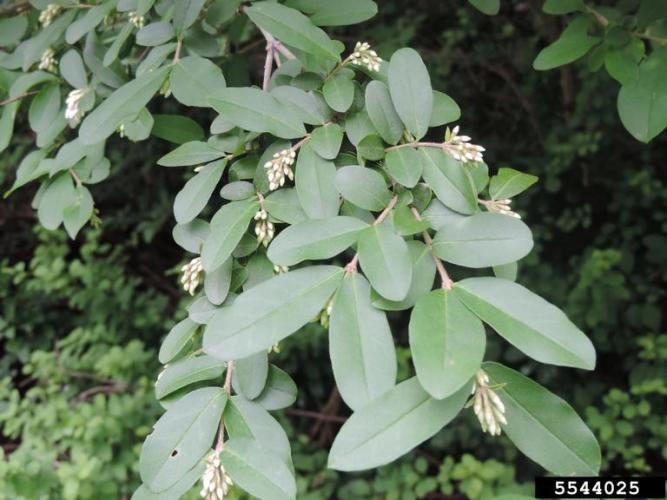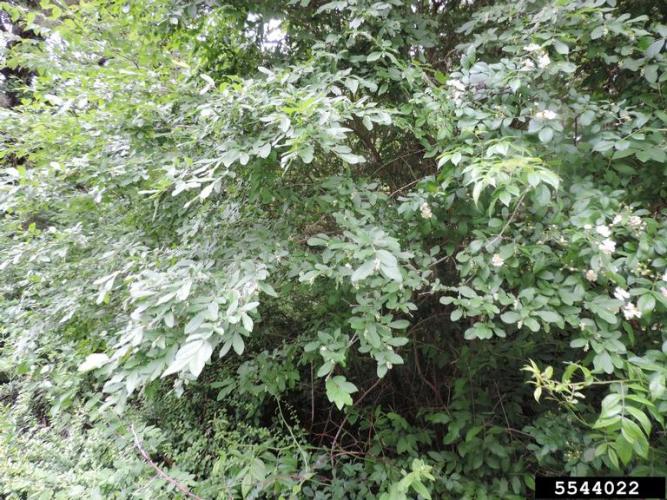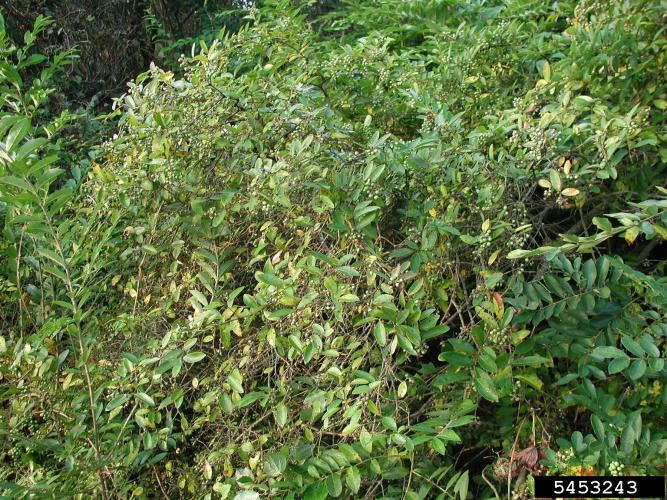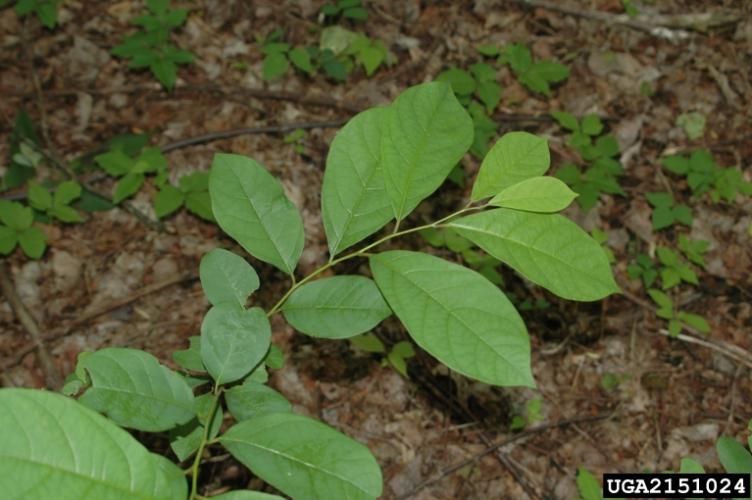Border privet
Identification
Appearance
Ligustrum obtusifolium is a woody, perennial, semi-deciduous shrub that grows to 10 feet in height. It is many stemmed and has pubescent branchlets.
Foilage
Its opposite leaves are elliptic to oblong-ovate in shape and measure 1-2 inches long and 0.3-1 inches wide. The upper leaf surface is dark green in color, while the lower surface is pubescent, or only pubescent on the mid-rib.
Flowers
The white flowers are unpleasantly scented and are borne in nodding panicles that measure 0.75-1.5 inches long. The flowers appear on the plant in June.
Fruit
The fruits are black or blue-black, somewhat glaucous drupes. They are subglobose in shape and measure 0.25 inches in length. Fruit appear on the plant in September and persist on the branches into the winter.
Biology
Ecological Threat
Privets can form dense thickets, which reduce light and moisture availability for native shrubs and wildflowers. This decreases plant diversity and impacts the animals which depend on them for food and shelter.
Origin
Privet species were introduced to the US in the 1800s
Habitat
Forests, forest edges, fields, meadows, disturbed areas with rich soils
Life Cycle
Privets produce white flowers from April to June, which are followed by green drupes from July to March. These fruit gradually ripen to a dark purple or black color in the winter. It is often difficult to differentiate between the four privets to the species level, particularly when they are not flowering.
Vermont Distribution
How You Can Help
Native/non-invasive alternatives
Northern spicebush (Lindera benzoin)
Native Perennials and Shrubs for Vermont Gardens
Alternatives to Common Invasive Plants and Characteristics of Select Alternatives
Citations
Photo Credit
5544025, Richard Gardener, UMES, Bugwood.org
5453179, 5453163, Leslie J. Mehrhoff, University of Connecticut, Bugwood.org
2151024, Chris Evans, University of Illinois, Bugwood.org
